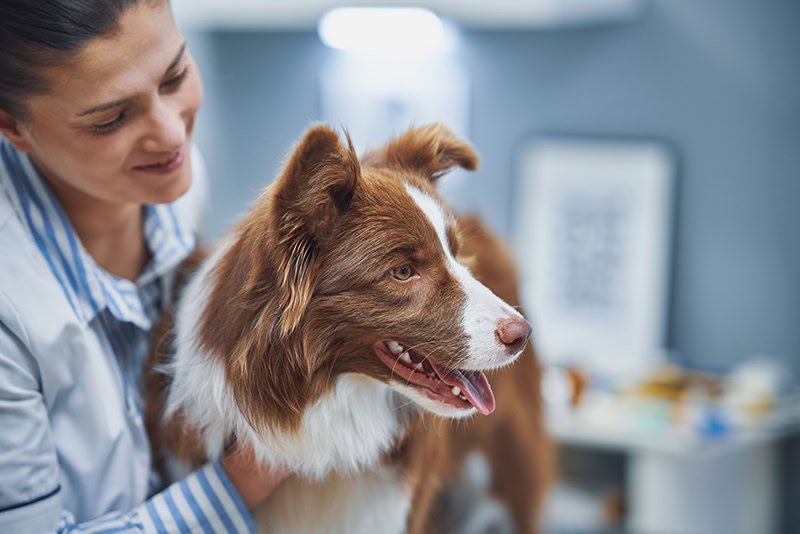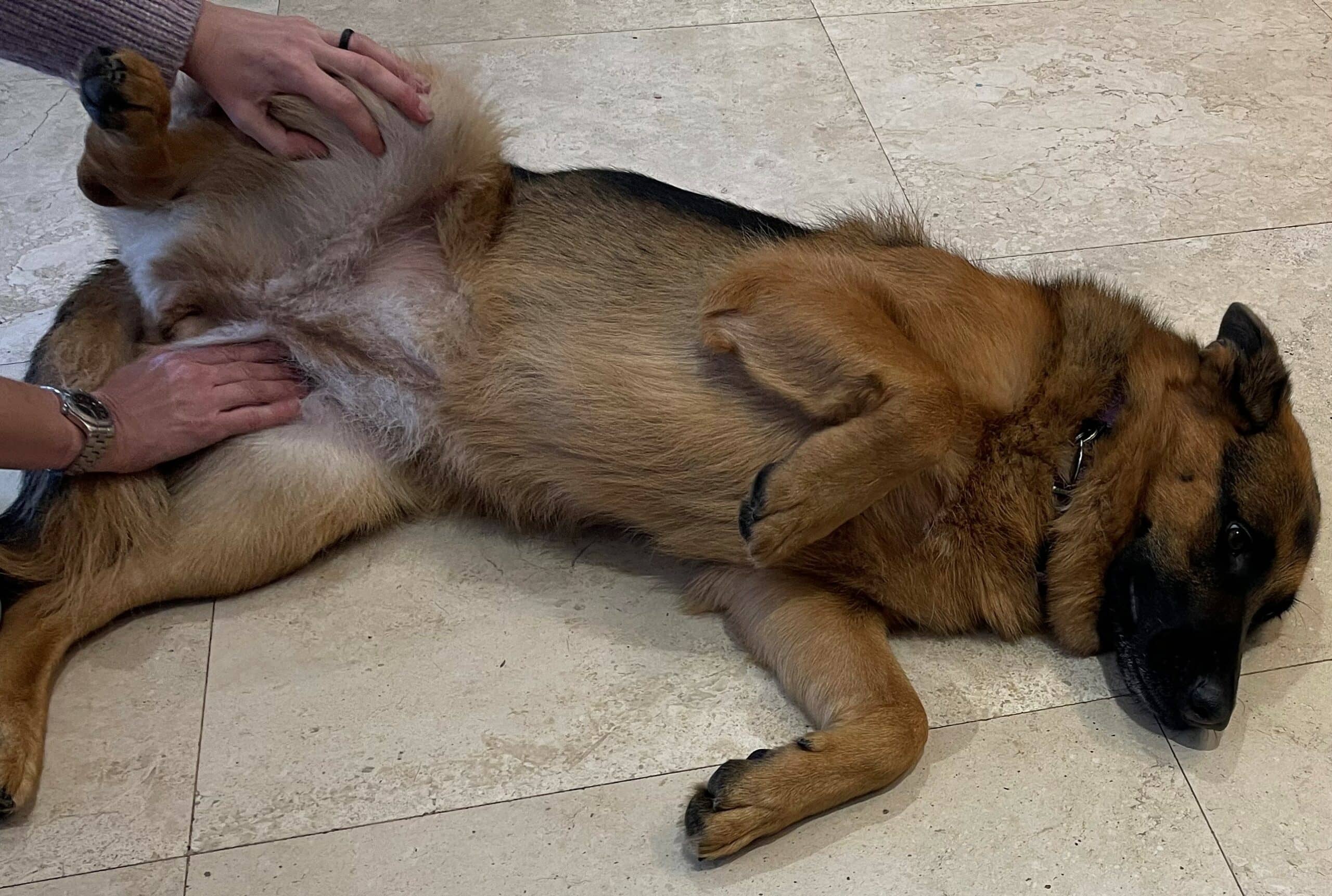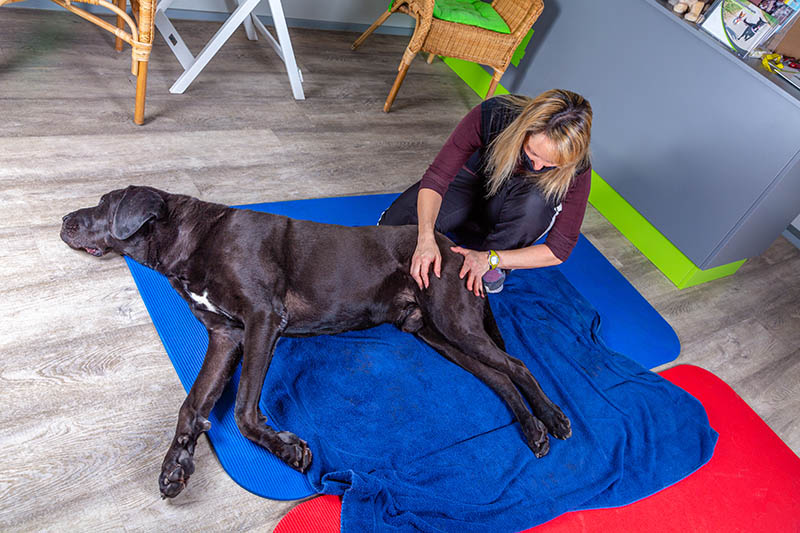VET APPROVED

The information is current and up-to-date in accordance with the latest veterinarian research.
Learn more »Part of your dog’s routine vital-sign check at home will be checking their heart rate. This can be fairly easy once you know which spots to feel for, and it rarely takes longer than a few minutes to do. Checking your dog’s heart rate can help you determine how your dog is feeling and whether there could be an underlying health problem that requires a trip to the veterinarian.

Why Should You Check Your Dog’s Heart Rate?
Making sure your dog is in good health by monitoring them at home and giving them access to prompt healthcare is part of being a responsible owner. While all dogs should go for a routine wellness examination at a veterinarian at least once or twice a year (depending on their age), you can still check your pet’s heart rate and general physical health from home.
This way, you can feel and listen for any abnormalities in your dog’s cardiovascular function and compare it to what their resting heart rate usually sounds and feels like. Canines can develop several cardiovascular problems, which makes it important to check your pet’s heart health regularly. Picking up any pulse abnormalities may help you catch some ailments early.
You can check your dog’s heart rate and feel their pulse as often as you like, and it can form part of their weekly or monthly vital-sign check. If you are concerned about your dog’s heart rate or pulse, you should bring it up with a veterinarian.


The 6 Tips for Checking Your Dog’s Heart Rate
Since it’s unlikely that you have a veterinary stethoscope lying around, you will need to use your hands to feel your dog’s heartbeat and pulse. Other than that, you’ll need a calm pet and a stopwatch (or your cellphone’s timer).
Here are six tips that you can use to check your dog’s heart rate.
1. Know Your Dog’s Normal Heart Rate Range
Adult dogs typically have a resting heart rate between 60 and 180 beats per minute (bpm). Young puppies are going to have a higher heart rate than adults. A healthy and normal heart rate for your dog can depend on their breed size, age, and any medical conditions. Your pup will also have a different heart rate when they are nervous, excited, or exercising compared to when they are resting.
| Newborn puppies: | 220+ bpm |
| Puppies (under 4 weeks): | 180–220 bpm |
| Toy breeds (under 20 pounds) | 140–180 bpm |
| Small breeds (under 30 pounds): | 100–160 bpm |
| Medium to large breeds (30 to 90 pounds): | 70–120 bpm |
| X-Large breeds (over 90 pounds): | 60–90 bpm |
When you regularly check your pet’s heart rate, you will be able to compare it to their more recent checks and possibly detect any abnormalities.
2. Keep Your Dog Relaxed
When checking your dog’s heart rate from home, it’s important to make sure you do it while they are resting. Movement and intense emotions can affect the heart rate, even though those are normal. The best time to check your dog’s heart rate is when they have been lying down and resting for a few minutes. Alternatively, you can also check their heart rate while they are sleeping (though, just like a human, their heart rate will be well below normal when they’re asleep).

3. Locate Your Dog’s Heart or Pulse
A dog’s heart rate is the number of times that their heart beats per minute, and it can be measured from a few spots on their body.
Their direct heartbeat can be felt on their chest, usually at the point where their left elbow meets their chest. You will need your hand flat to feel and focus on the beating of the heart. This point is also known as the point of maximal impact and is the easiest place to detect your dog’s pulse. Another way to find this spot is by counting your dog’s ribs. The heartbeat can be measured anywhere between ribs five and nine for most breeds. Canines have 13 pairs of ribs. Starting at their last rib (where their chest meets their abdomen), gently feel for the rib, and count backward along the left side of their chest until you can feel their heart rate.
A dog’s femoral artery is located on the inner thigh (where the leg “meets” with the body). You will need to slightly press down on the inner thigh to feel for a pulse from the femoral artery. In some cases, you may also be able to pick up a dog’s pulse from their jugular artery, located at the base of the neck (on either side of the neck).
Locating your pup’s heart or an artery to measure their pulse can be tricky if your pup is overweight. In such cases, it’s best to consult with your veterinarian for tips on how to find a pulse in your pup. Locating the jugular artery on brachycephalic breeds (flat-faced dogs) is exceptionally tricky.
4. Use Your Index and Middle Finger
When checking your dog’s femoral pulse, you should use the balls of your index and middle finger. These will give you a more reliable way of feeling the pulse.

5. Smartphones and Stopwatches Will Be More Accurate.
To take your dog’s pulse or check their heart rate, you will need to accurately monitor the beats per minute. Timing yourself isn’t going to be that reliable, so you should use a stopwatch or smartphone that can do the counting for you. Set the timer to 60 seconds, and begin counting the number of times you feel the pump in your dog’s pulse.
If you can feel your dog’s heart beating in their chest using a flat hand, you will need to count each time it beats twice (also known as a “lub-dub”) as one beat. Once the timer has run out, you will then know how many times your dog’s heart beats per minute.
Smartphones can also be useful for quickly jotting down your findings. Remember to record the date, the time, the location where you found the pulse, and the pulse itself.
6. Multiply Your Findings Instead
If you are finding it difficult to take your dog’s pulse or heart rate because they are moving around too much, or perhaps you want to save time, you can multiply your findings. You can count the beats or pulse for 30 seconds instead of a full minute and multiply the number by two. If your dog does not want to be touched for this long for whatever reason, you can count the beats and pulse for 15 seconds and multiply it by four. This will still give you an indication of the beats per minute while saving you some time.


Conclusion
You can either check your dog’s heart rate by placing your flat hand over their heart and counting the beats per minute, or you can use the method of feeling for your dog’s femoral or jugular pulse. Even if you regularly check your dog’s heart rate from home, your veterinarian will be able to professionally check and assess your pup’s heart rate and cardiovascular function.
Featured Image Credit: 135pixels, Shutterstock
Contents
- Why Should You Check Your Dog’s Heart Rate?
- The 6 Tips for Checking Your Dog’s Heart Rate
- 1. Know Your Dog’s Normal Heart Rate Range
- 2. Keep Your Dog Relaxed
- 3. Locate Your Dog’s Heart or Pulse
- 4. Use Your Index and Middle Finger
- 5. Smartphones and Stopwatches Will Be More Accurate.
- 6. Multiply Your Findings Instead
- Conclusion











